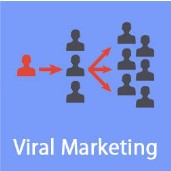Content marketing has become one of the most powerful tools in a brand’s marketing arsenal. In an era where consumers are bombarded with ads, content marketing offers a more organic, less intrusive way to connect with potential customers, build trust, and increase brand awareness. But with so much noise in the digital space, how do you ensure that your content stands out? The answer lies in implementing the right content marketing strategies. In this article, we’ll dive deep into the best content marketing strategies that businesses must adopt to stay ahead in 2025.
1. Understanding Your Audience
The foundation of any successful content marketing strategy is a deep understanding of your target audience. You can create the most well-written, visually appealing content, but if it doesn’t resonate with your audience, it’s unlikely to generate the desired results. Audience understanding helps you create content that aligns with their needs, interests, and pain points.
How to Understand Your Audience:
Buyer Personas: Create detailed profiles of your ideal customers. These personas should include demographic information, interests, behaviors, challenges, and motivations.
Customer Surveys: Regularly survey your current customers to get feedback about their preferences and opinions.
Analytics Tools: Use Google Analytics, social media insights, and other data analytics tools to track your audience’s behavior and preferences.
Social Listening: Monitor conversations about your brand or industry on social media platforms to better understand customer concerns and interests.
2. Developing a Content Calendar
Consistency is key when it comes to content marketing. One of the best ways to ensure that you remain consistent is by developing a content calendar. This tool will help you plan your content in advance, keeping your messaging aligned with important dates, events, and campaigns.
Why a Content Calendar Is Important:
Time Management: A content calendar helps you plan and schedule your content in advance, making it easier to manage deadlines.
Diverse Content: It ensures that you’re publishing a variety of content types (blogs, videos, infographics, etc.) consistently.
Strategic Alignment: Your content can be tailored to align with product launches, seasonal promotions, or upcoming events.
Team Collaboration: A content calendar helps coordinate efforts across your marketing, creative, and sales teams.
Tips for Creating a Content Calendar:
Frequency: Determine how often you’ll publish content (daily, weekly, monthly).
Content Types: Diversify the types of content you create, from blog posts to videos to podcasts.
Promotion Channels: Plan which platforms and social media channels will be used to distribute your content.
KPIs: Set clear goals and performance metrics for each piece of content.
3. Investing in High-Quality Content
Content quality has never been more important. With so much content flooding the internet, it’s essential that your material stands out in terms of value, depth, and originality. High-quality content is more likely to capture your audience’s attention, be shared, and generate leads.
What Makes Content High-Quality:
Relevance: Your content should be directly aligned with your audience’s needs and interests.
Depth and Detail: Well-researched, in-depth content tends to perform better than shallow, surface-level articles.
Clarity and Readability: Ensure that your content is easy to read, well-organized, and free of errors.
Originality: Avoid copying or rehashing ideas from other sources. Unique, fresh perspectives are more likely to resonate with your audience.
Types of High-Quality Content to Focus On:
Long-Form Blog Posts and Articles: These tend to perform well in search engine rankings and provide significant value to readers.
Case Studies: Showcase real-world examples of how your product or service has solved customer problems.
Video Content: Engage users on platforms like YouTube, Instagram, and TikTok with engaging, informative videos.
Interactive Content: Quizzes, surveys, and calculators are a great way to engage users and collect valuable data.
4. Search Engine Optimization (SEO)
Even the best content is useless if no one can find it. Search Engine Optimization (SEO) ensures that your content is visible on search engines like Google. By optimizing your content for search, you increase the likelihood that your target audience will find and engage with your brand.
Key SEO Strategies for Content Marketing:
Keyword Research: Use tools like Google Keyword Planner or SEMrush to identify the terms and phrases your target audience is searching for. Incorporate these keywords naturally into your content.
On-Page SEO: Focus on optimizing elements like title tags, meta descriptions, headers, and image alt text.
Backlinking: Gain backlinks from authoritative sites to improve your content’s credibility and search engine ranking.
User Experience (UX): Ensure your website is mobile-friendly, fast-loading, and easy to navigate.
Content Structure: Use a clear and logical content structure with headings, subheadings, bullet points, and short paragraphs to improve readability.
5. Embrace Storytelling
Storytelling is a powerful content marketing technique that helps build emotional connections with your audience. People remember stories better than facts, and stories can make your content more relatable, engaging, and memorable. Whether you’re sharing customer success stories or narrating the journey behind your brand, storytelling humanizes your business and makes it more appealing.
Effective Storytelling Tips:
Focus on the Audience: Center your story around your customers, their challenges, and how your product or service solves their problems.
Be Authentic: Avoid overly polished or scripted narratives. Authenticity fosters trust with your audience.
Use Visuals: Enhance your storytelling with visuals, such as images, videos, and infographics, to make the content more engaging.
Keep it Simple: Good stories are often simple and straightforward. Don’t overcomplicate things.
6. Leverage User-Generated Content (UGC)
User-generated content (UGC) refers to any form of content—like reviews, testimonials, photos, or videos—created by your customers or audience. UGC not only builds trust with potential customers but also amplifies your brand message.
Why UGC Is Important:
Authenticity: UGC feels more authentic and relatable than branded content.
Social Proof: Reviews and testimonials act as social proof, influencing purchasing decisions.
Community Engagement: UGC fosters a sense of community around your brand, encouraging more customers to engage with you.
How to Encourage UGC:
Contests and Giveaways: Encourage users to share their experiences in exchange for a chance to win prizes.
Hashtags: Create branded hashtags for customers to use when posting about your brand.
Customer Stories: Feature user stories and testimonials on your website and social media channels.
Interactive Polls and Questions: Use polls or interactive questions on platforms like Instagram to encourage followers to share their opinions.
7. Repurposing Content
Not every piece of content you create needs to be entirely new. Repurposing content allows you to reach a wider audience and get more value from the same resources. For example, you can turn a long-form blog post into an infographic, podcast, or social media post.
How to Repurpose Content:
Transform Blog Posts into Videos: Create short, engaging videos summarizing the key points of a blog post.
Turn Webinars into Articles: If you’ve hosted a webinar, transcribe it and turn the key insights into an article.
Create Infographics: Visualize complex data or research from your blog posts into easy-to-understand infographics.
Social Media Snippets: Break down key insights from articles or videos into bite-sized social media posts.
8. Data-Driven Content Strategy
A data-driven content strategy involves using analytics and data to guide your content creation process. By analyzing metrics like page views, bounce rates, and user behavior, you can make more informed decisions about the type of content to produce and how to optimize it for better performance.
How to Use Data for Content Strategy:
Track Key Metrics: Monitor metrics like traffic, engagement, conversion rates, and social shares.
A/B Testing: Experiment with different headlines, content formats, or distribution strategies to see what works best.
Content Performance Reviews: Regularly assess which pieces of content are performing well and which aren’t, then adjust your strategy accordingly.
9. Influencer Marketing
Collaborating with influencers can be an effective content marketing strategy. Influencers can help extend your brand’s reach, tap into new audiences, and lend credibility to your products or services. Choose influencers who align with your brand values and have a genuine following.
How to Leverage Influencers:
Micro-Influencers: Partner with influencers who have a smaller but highly engaged audience for more targeted campaigns.
Sponsored Content: Work with influencers to create content that promotes your product in an authentic way.
Long-Term Relationships: Building long-term partnerships with influencers can lead to more authentic and sustained brand advocacy.
Businesses must adopt effective content marketing strategies to stand out and thrive. By understanding your audience, creating high-quality, optimized content, embracing storytelling, and utilizing innovative tactics like user-generated content and influencer partnerships, you can craft a content marketing plan that drives traffic, builds brand loyalty, and ultimately boosts conversions. Remember, content marketing is not a one-size-fits-all strategy—regularly analyze your results and be prepared to evolve to stay ahead of the competition.
By staying focused on creating valuable, relevant content that resonates with your audience, you can build a strong, lasting connection with customers that will benefit your brand for years to come.




